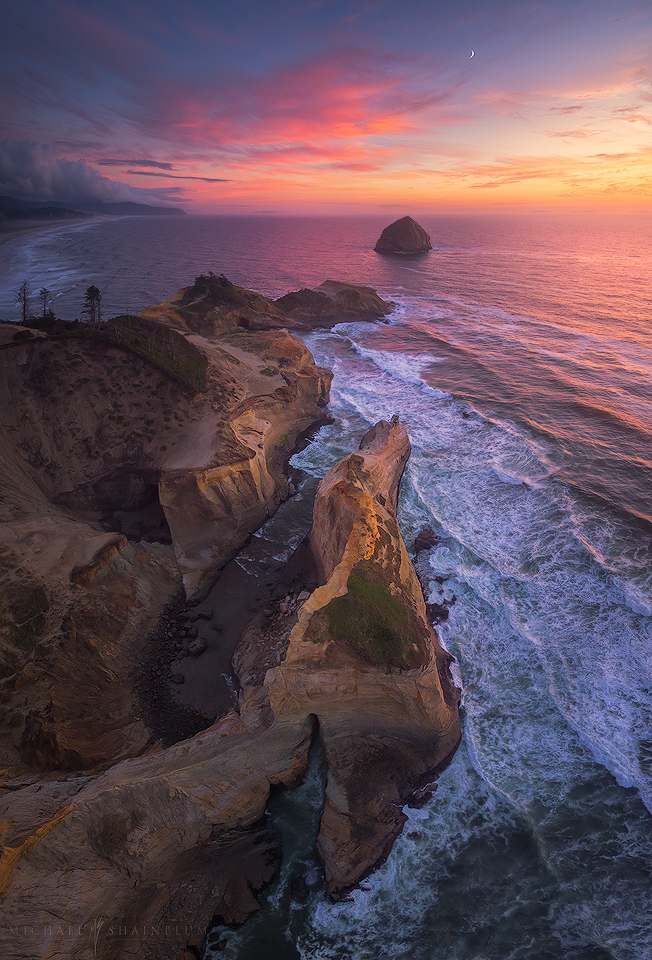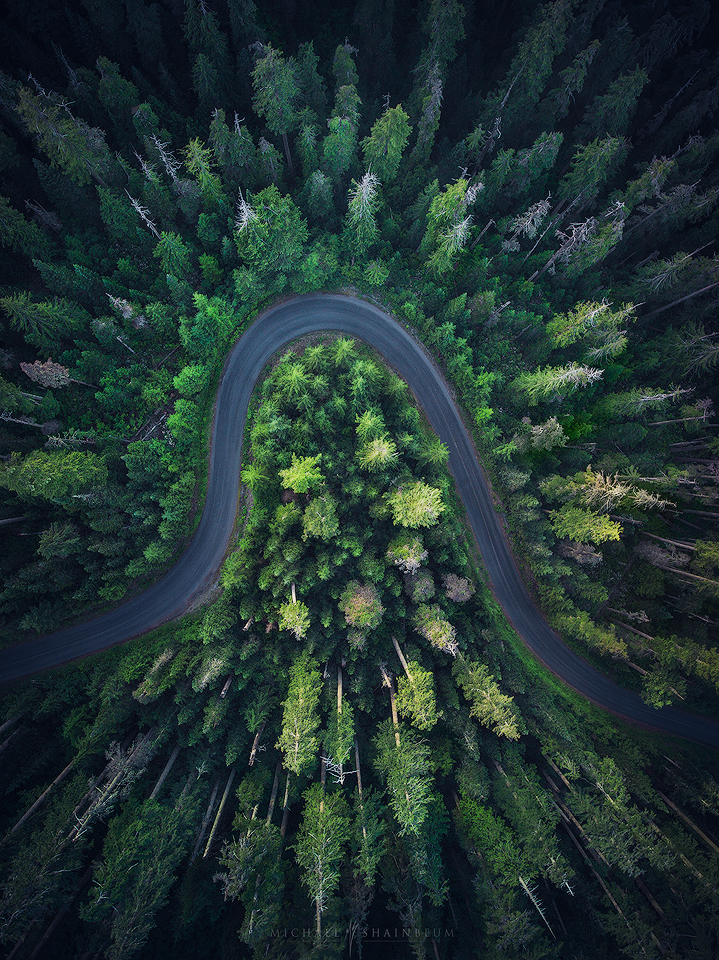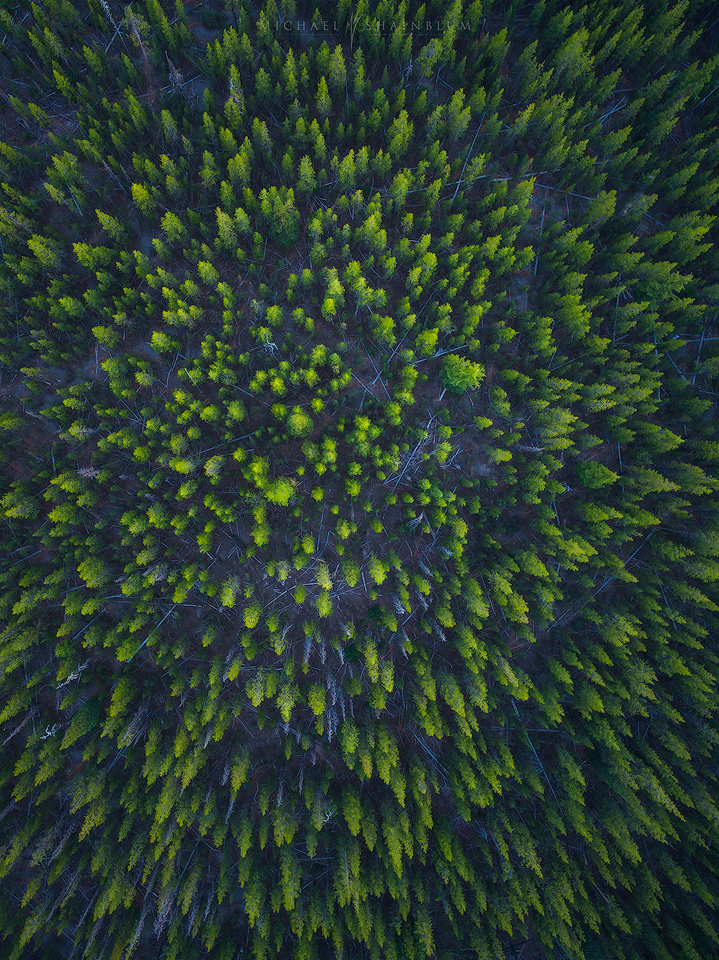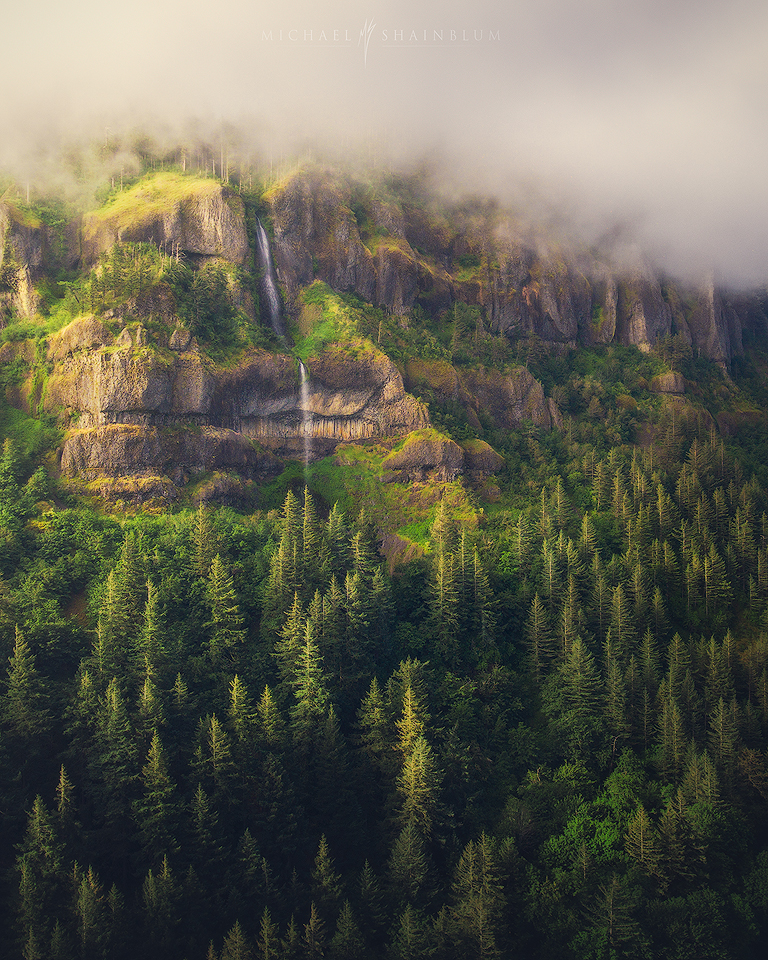
Field Notes Interview: Michael Shainblum, Photographer/Filmmaker
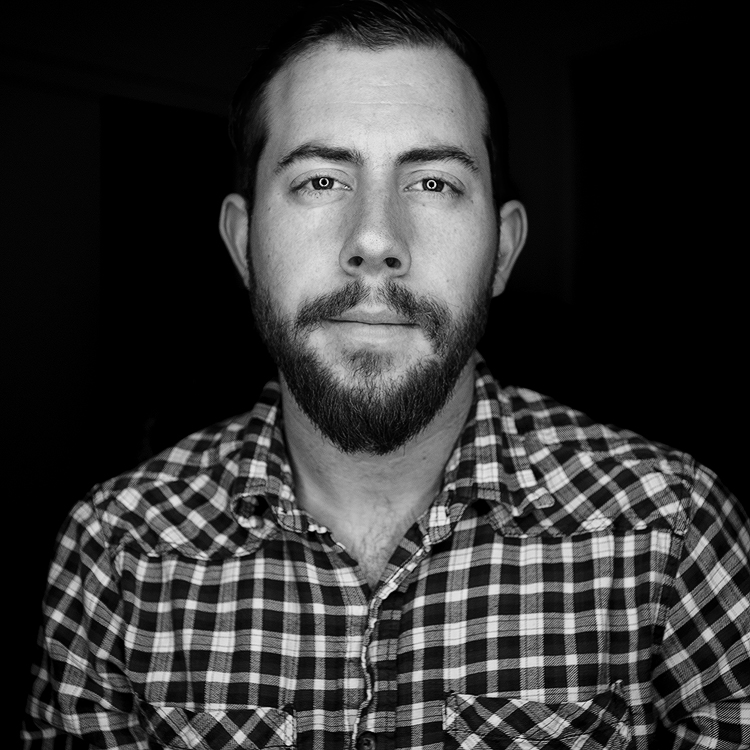
Known for his uncanny ability to capture stunning landscapes, Michael Shainblum is no stranger to the beauty of nature. A photographer at heart, Shainblum figured that the next logical step in his creative progression would be experimenting with drones. After some encouragement from a few friends, he set out on a series of trips that would eventually make up his first aerial short video, Rise.
The entirety of the film is shot throughout our beautiful state of Oregon, bringing a new perspective to some of the wondrous landmarks we know and love while also shedding light on a few hidden gems. We chatted with the San Francisco-based filmmaker and photographer about the making of Rise and the challenges and nuances that go into filmmaking with drones. Enjoy.
Rise is your first aerial short film. What inspired you to take this new approach and were there any challenges involved?
It was always something I was very interested in. It’s like, you get in the plane, you take off, you’re up in the sky, you look out the window and you see a familiar landscape that maybe you’ve driven past, or you see your house from above. I was always very interested by that concept of getting a new perspective of a familiar place.
I spent a lot of time shooting Oregon before I got into aerial photography. I’ve been to a lot of these places before multiple times and I’ve shot them from the ground. But to be able to capture it from above and get that new perspective was something that I was always really interested in, even well before aerial photography with a drone was even possible. Even before I ever got my first drone, I did a few aerial shoots just in a regular helicopter, and I always thought that was really fun.
The only problem is, logistically, it’s so much more of a hurdle to make that work. It’s more expensive, it’s more planning. With a drone, besides making sure of regulations and everything, you just go to show up at a spot, take off, and within five minutes you’re looking at a location in a way you haven’t before. I think that’s really interesting, just that whole concept.
Yeah, that’s awesome.
I definitely got into aerial photography just because it seemed like a natural evolution of what was possible. It seemed like it would tie in really well with the sort of nature stuff I was doing before, with timelapse and a little bit of slow motion. Aerial just seemed like the perfect fit to allow me to keep expressing my creativity, while still trying to challenge myself and get into something a little bit new.
What was the learning curve with using the drone and doing aerial film and photography? How did you know the drone’s not going to crash into a tree or anything like that?
That’s a good question. They’re pretty easy to fly — like, somebody could just pick one up and fly it and not crash it, first flight, easy. I think the learning curve comes a little bit more with understanding how to use the drone for filmmaking, like actually creating interesting shots that tell a story.
That definitely took a little bit of time to learn. The first shots I was doing with the drone, I went to Oregon and I spent, I think, two and a half weeks the first time. At that time, there were a lot of places that I shot that now aren’t okay to shoot…regulations have come in so much in the past two, two and a half years. By the end of the trip, after two weeks, the footage that I was shooting was so much better than some of the footage I was shooting at the start of the trip. Just shooting 10 times a day, I felt like I was learning more, I was understanding what is possible, understanding the limitations.
A lot of the footage from that first trip even didn’t make it into the cut, because I had done like four or five trips after that. Every single time I would go out and shoot, the footage would come out better and better to where I am now. I probably could’ve made a six minute video with that first trip. A lot of that footage got replaced with cleaner footage or more interesting shots or even the drone itself going from the Phantom 3 to the Phantom 4. The Phantom 4 quality got better, the devices did better in the wind. The technology improving helped improve the shots. Some of those original shots that I did do at that first trip did end up making it into the piece.
Going off that, how did you compile all that footage from your first trip and second trip — especially as it got better and you maybe started to favor the later footage — into this under five minute video?
That was probably the hardest part. That’s one of the reasons why I’ve sat on that footage for two years. Every single time I would make a video cut — which I went through like at least 40 different cuts over two years — I would just find little things I wanted to change or basically the way I wanted to tell the story, or change the song.
The whole concept of the video, though, is moving through Oregon, through different scenes. You’ll notice the video starts out on the coast and then you start moving through the different areas, like the [Columbia River] Gorge. I just wanted it to start out on the coast and then end going through the waterfalls, which I think is probably one of the most unique parts about Oregon — the beautiful waterfalls, beautiful gorges, stuff like that. I wanted to create a journey with the piece.
As far as picking locations…it’s basically just picking my favorite spots from Oregon, I guess. Especially Sparks Lake. To be able to go to that spot specifically and see it from above was really, really cool. We got some really interesting light, really beautiful sunrise shots and sunset shots, as well. It was like that with most of the locations. I’d say all the locations that are in that video I had been before and I had shot from the ground and I said to myself, “Okay, this place is going to work perfect for an aerial shot.”
Why Oregon, in particular? Just because you were so familiar with the different spots? Is there any reason beyond that?
I think it’s mostly the diversity of the landscape. There’s so much to offer in Oregon. Just as far as beautiful rugged coastline, amazing waterfalls, incredible mountains with lakes. There’s so many incredible places in Oregon. Depending on where you are, you could drive like an hour or two and it feels like you’re in a completely different place, you know?
You could be seeing a waterfall in the middle of a rain forest and then two hours later be on the coast, which I thought was really cool. It just made for this perfect location to experiment and try out all the different aerial techniques that I wanted to. Plus it’s also a nice getaway from California.
Now that you’ve finished this first aerial short video, do you think this is something that you’ll continue to do in different landscapes and places?
I’d like to, definitely. It is quite tough to figure out which places I can and can’t shoot. Especially in California, there’s so many regulations…That’s probably the biggest hurdle. It’s just trying to figure out where to fly.
I think it’d be cool to shoot some stuff in other countries, because there are places where you’re a little bit more free to go around and shoot. Whereas here, especially with possible incidence occurring, it’s getting a little bit more tough to find places to fly. As far as doing it in the future…the cool thing is the technology every year is changing so much that in the near future the cameras that are going to be on these drones are going to be really high-end. They’re adding more features every single time. I’m sure you’ve seen the smaller drones. Now they’re making them smaller. The technology
is evolving so fast that there’s going to be so many new possibilities with aerial photography.
Stills from Rise.
What advice would you give to somebody making their first aerial video now that you’ve crossed one off your list?
I think just having a vision for what you want to do. Tell some sort of story. It doesn’t need to be an actual narrative, but some sort of flow with the visuals in some sort of overall concept of what you want to show, rather than just random scenes.
Then I think it’s important to remember that it is actually a camera, because it’s overwhelming to just have the drone and take it up into the sky. Sometimes the fact that you’re in the sky makes it hard to actually focus on getting an interesting shot. You forget the fact that it is just a camera, that you can move and change the angle and do certain movements. I think that’s a hard thing to get over at first — it’s a camera and to treat it like you would any other camera.
Do interesting shots. Remember you can point the camera down completely and get abstract views from above. You could tilt the camera, pan the camera, move the camera in pretty much every direction. Just get over the fact that it’s overwhelming and take it step by step. A lot of the times when I fly, I bring tons of batteries with me…
My first flight, I almost never actually shoot anything. The first flight is just to plan out where I actually do want to shoot. I’ll take the drone up, I’ll practice some different views. I’ll look at some different shots I might want to get and then I’ll bring the drone back, replace the battery and then actually shoot what I wanted and practice getting a shot. I’ll do some shots like two or three, maybe four or five times before I actually get the movement that I was looking for.
That makes sense. I like how you said just get over the fact that it’s overwhelming.
Yeah, I think anything that’s new can be a little bit overwhelming, and sometimes for people it’s hard to translate doing a cinematic shot from the ground and then doing a cinematic shot from the air. Sometimes it’s hard to get over the fact that you’ve now put your camera in the sky and you’re looking at everything from above. Then also practicing safety, too. I don’t really preach too much about that, but… just be safe. If there’s people around you, let them know that you’re flying. It’s like if you go to a park or something and there’s people around, it’s so easy to just go up to them and be like, “Hey, you guys mind if I fly? I know it’s a little loud.”
As long as you let people know, they’re usually really appreciative that you’ve taken them and their experience into consideration. I have had one or two people who were like, “Yeah, I just I don’t really want anyone flying near me.” No problem. You don’t want to ruin somebody’s experience just because you want to get a shot.

